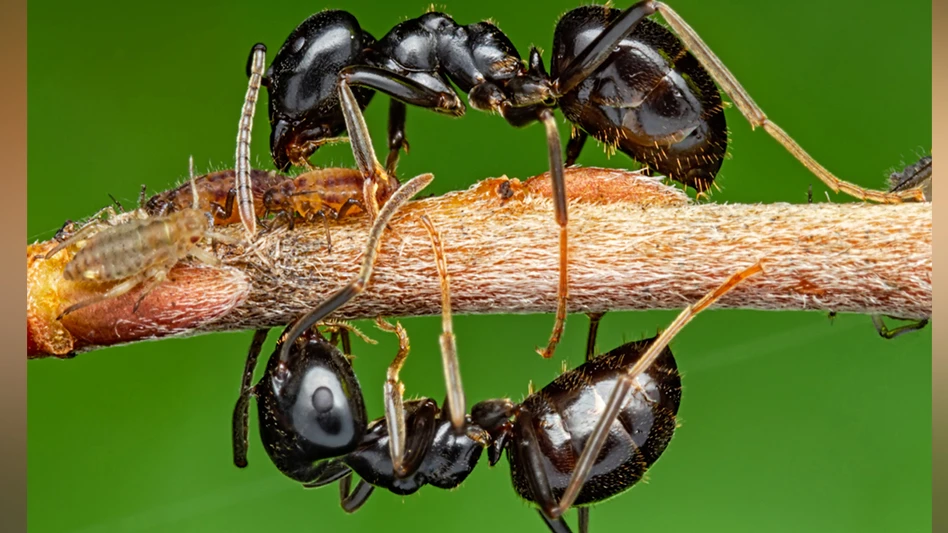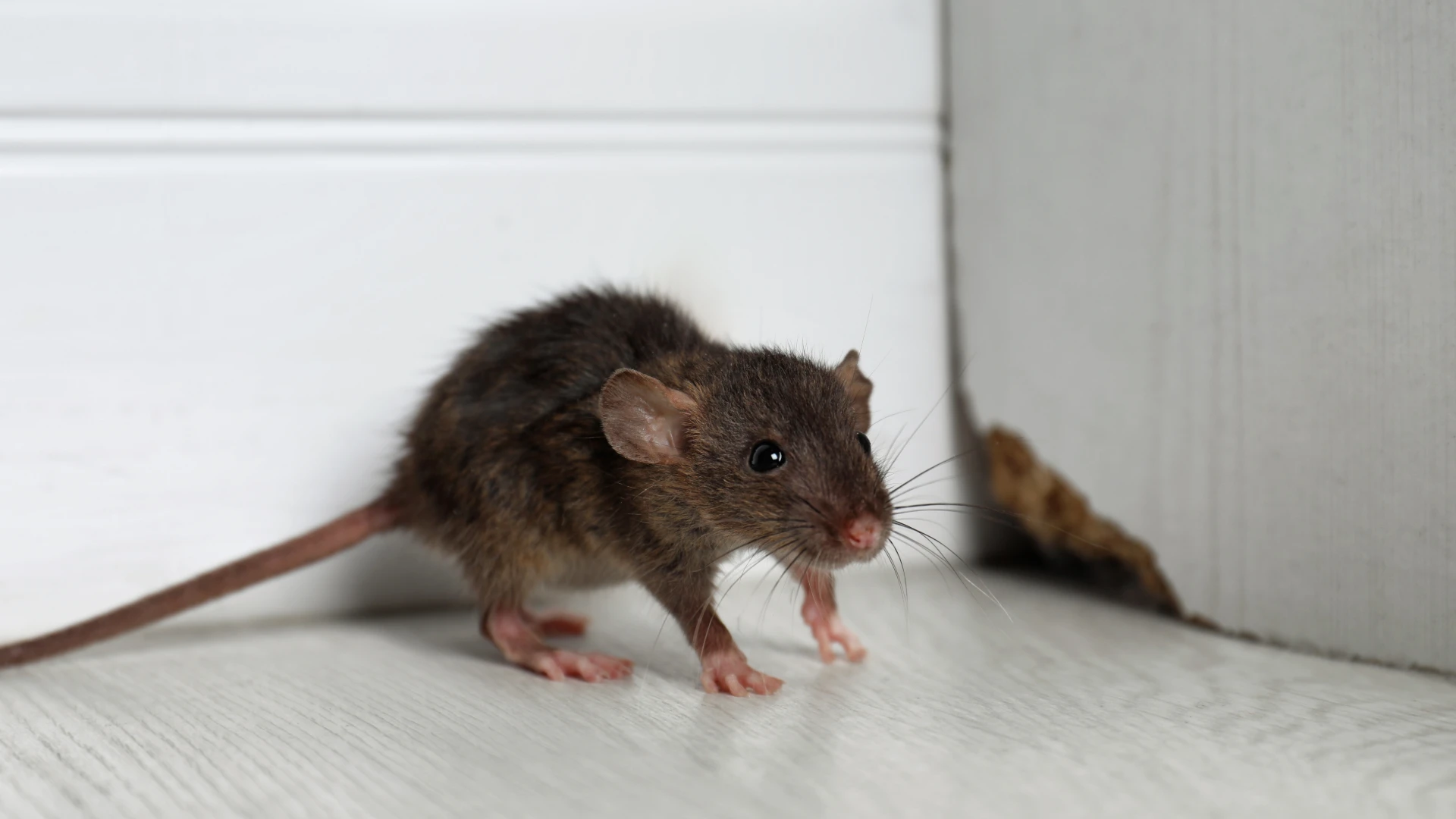
@ rusm | istock
Ant season is here, so pest management professionals (PMPs) need to be aware of the places where ants can find one of their favorite foods: honeydew. By learning more about the relationship between ants and honeydew, PMPs can be better equipped to treat accounts for ant emergency calls.
How many times have you come across an account that has a frantic homeowner telling you about how their kitchen was invaded by ants? You arrive at the home and the ants have “mysteriously disappeared.” The homeowner is baffled, stating the ants are gone because you have arrived! We, as PMPs, come across this many times as we inspect the kitchen, interior, exterior etc., only to find no ants. The next step is to apply gel bait or perhaps dust as a prevention and inform the customer to call us if ants return after a day or two. But is there more we can do as PMPs? Yes! But first, let's look at the sources.
HONEYDEW DEFINED. So, what is honeydew and why is it important to us (and ants)? Honeydew is a secretion produced by specific insects (e.g., aphids, scale insects, mealy bugs, leafhoppers, etc). These insects siphon juices out of plants or trees and exude a sweet sugary secretion out of their body. In some cases, such as aphids, honeydew can be squirted out and left on leaves, bark, stems and even fences and patio furniture, but in most cases ants will farm aphids as we would livestock. Ants protect aphids against predators (e.g., lady bird beetle adults and larvae) and place aphids around trees/bushes, where they suck juices and reward ants with honeydew.
Honeydew is rich in sugar, which is important for ant survival. This is most important during late winter through spring when insects (their protein) are not readily available. Ants are in diapause in winter and as weather gets warmer, ants become more active due to the energy boost from the honeydew. However, when it rains aphids and honeydew are washed away, leaving ants looking for a new or an old food source.
To find where ants are getting their honeydew the PMP must become familiar with honeydew-producing insects: aphids, leafhoppers, scale insects, mealy bugs, etc. Another food source a PMP should be aware of are vegetation with flora that these insects are attracted to: grasses (crab grass), grains (corn), plants and trees in the rose family, deciduous trees, coniferous trees and many more.
ANT ID IS A MUST. In the process of treating ants in homes, ant identification is a must. Several ant species across the globe are found in North America, making it difficult to know which ones prefer honeydew. In the PCT Field Guide For The Management Of Structure-Infesting Ants, there is an excellent chart provided by Stoy Hedges (Hedges, p15 and also below) that describes which ant species prefer honeydew, not to mention other food types. Basically, many ants we encounter are attracted to honeydew. Ant identification is important to make sure the correct species is the home invader or an occasional pest or even an ant that never enters a structure.

In identifying ants, color is not a reliable factor because dark brown can look like black and yellow can look like light brown or amber/orange etc. Size also is not a reliable identifier; what is small (>2mm) to one PMP may be medium (~3mm) to another PMP. The best way to identify ants is to have handy a small lens or loop (1.5 or 2 times magnification) to look more closely at the ant’s body. Ants we encounter are divided into three subfamilies: Formicinae, Dolichoderinae and Myrmicinae. To further identify the differences between the three we look at three body parts: the antennae, the pedicel and the gaster.
One of the best ways to determine the ant you have is to look at the bridge part of the ant between the thorax (middle part) and the gaster (the end part). This is called the pedicel, which will have one or two bumps called nodes. The Formicidae ants and the Dolichoderinae ants will have one node while the Myrmicinae will have two. Also the Formicidae will have a circle of rings around the anus while this will be absent on Dolichoderinae (Merchant, p 110-117). The antennae may be the best way to determine ant species from each other. This part is divided into the scape, which is the long part from the head and the segmented part called the funiculus. By counting the segments and seeing it ends in a larger segment(s) called a club, identification can be determined- for example, Pharaoh ants have 12 segments on their antennae and ends in a three-part club, while other similar ants (e.g., thief, odorous house, etc.) have antennae that look different.
HONEYDEW-PRODUCERS. For identifying where honeydew is being produced, you may need to look for the insects that produce it. All you need to do is look at the trees and bushes themselves. Aside from ant activity, these insects give themselves away because they move very little or can be abundant. By scanning the underside of leaves, stems, branches, scale insects will look like bumps on the surface while aphids will be green, white, brown and various other colors. Sometimes excess honeydew gets secreted and does not get picked up by ants. Instead, it's left where it was deposited where bees, flies, wasps and other sweet seekers will get a free treat. It’s not uncommon for a homeowner to be nervous when they see an enormous amount of activity (bees, flies, wasps) in a bush only to have the PMP determine that there is no nest and the above insects are only licking the extra honeydew off the vegetation. Another clue is that any missed honeydew will grow a black sooty mold on leaves, but also can be found on fences, parked cars and outdoor furniture. Predators too can be a useful tool. Lacewings and Asian lady beetles activity is a dead giveaway for aphids.
AN IPM APPROACH. So, what control methods can be undertaken? Integrated Pest Management is an excellent approach in these situations. Trimming vegetation away from structures should be done BUT consideration should be made doing this when ants are active say mid spring through late summer. There is a strong possibility that disturbing them during this time will cause them to go inside. So by landscaping from late November to late February or in climates in southern ranges when ants are least active because of weather, ant infestations can be more managed because honeydew producing insects and vegetation will not be close to structures when ant season starts.
Of course ants still may come in after a spring shower has washed away their aphid livestock. The PMP can usually find the ant trail during a sunny day (or at night for carpenter ants) and track it to a tree, leaf pile, stone or rock or even a temporary item like boards of wood etc,.
If pesticides are used, the label is the law as well as any state or local laws and they must be followed. Some alternatives to pesticides include a plant based soap that is applied to vegetation (this will control aphids etc), and a substance called tree barriers which are a type of adhesive gel applied to the base of a tree. It is important to remember that tree barriers may have limited use if tree branches touch each other on other properties.
The finding of honeydew and understanding the relationship it has with ants will help the PMP control troubled commercial and residential accounts. This will advance the company’s standing in the community and solve the pesky problem of the mysterious disappearing ants.
TERMS TO KNOW
Diapause - A period of rest (not hibernation) for insects in winter.
Node - One or two bumps that are found on the pedicel.
Carbohydrates - Foods that are rich in sugar- honeydew.
Pedicel - The body part of an ant that bridges the thorax and gaster.
Funiculus - The antennae part that is broken down into segments.
TAKEAWAYS
(5) If there is an abundance of predators such as Asian lady beetles (except for the fall) you may have an issue.
REFERENCES
Hedges, Stoy. Field Guide for the Management of Strucure-Infesting Ants. D. Moreland, Ed. 3rd edition. G.I.E. Media, 2010. p-15.
Merchant, Mike, Richard H. Levine. IPM for the Urban Professional: A Study Guide for the A.C.E. Entomological Society of America, 2015. pages 110-117.
The author is a graduate student University of Nebraska and a certified field trainer with Big Blue Bug Solutions, Providence, Rhode Island.
Latest from Pest Control Technology
- Target Specialty Products, In2Care Team Up for Thursday Webinar
- Panic! Carpenter Ants During the Dormant Season
- Coxreels Announces Improved Options for Vacuum Series Reel
- NEPMA Hosts Annual Spring Training
- Mark Janowiecki Shares How PCOs Can Design City-Wide Termite Programs
- PestCo Holdings Acquires Garella Pest Services
- Understanding Rodents and Bird Flu
- Green Pest Solutions Awards Safest Driver New 2025 Ford F150





